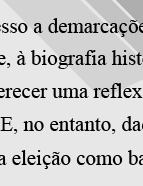

................................
The works produced in this context would find their preferred interlocutor in another, more cultured type of reader, and their chosen characters were the Royal Family or the highest leaders of the nation. In 1934, Caetano Beirão published the biography (which he referred to as a "historical revision") of Queen Mary I, which received the Alexandre Herculano Award by the SPN (National Propaganda Secretariat); two years later, Alfredo Pimenta released "King John III," the first and only volume of a series suggestively titled “Biblioteca de revisão histórica” ["Library of Historical Revision"], published by the Livraria Tavares Martins, seeking to "rehabilitate the figures of the supreme rulers [of the Nation]". In the 1940s, they were followed by Eduardo Brazão with a study on the figure and reign of King John V, part of the "Historical" collection coordinated by Damião Peres; the musicologist and historian of music, Mário de Sampaio Ribeiro, with a work on Queen Leonor; Hipólito Raposo with the biography of Queen Luisa de Gusmão; and João Ameal, who, among others, this time in the collection “Rainhas e Princesas de Portugal” ["Queens and Princesses of Portugal"], directed and re-edited by Tavares Martins, published Dona Leonor: “Princesa Perfeitíssima”. [Dona Leonor: "Most Perfect Princess"] Although less concerned with reaching a very broad audience, in line with an anti-mass market ideology, the publication of these works experienced relative and varied success – Caetano Beirão's biography, for example, unlike the aborted "Historical Revision" collection, saw four editions within ten years (J. Cortesão, “A história e o historiador”, [1959(?)], p.5; João Ameal, Dona Leonor, 1943, pp.v-xv; Alfredo Pimenta, D. João III, 1936, “Pródromo” [s.p.])
However, it was not on this overly erudite model for the average Portuguese reader that the vast majority of biographical production sustained itself, even in the early years of the Estado Novo regime. By the second quarter of the century, it was mainly the popularisers and so- called publicists, amateurs by rule, who took the lead in rescuing the past. Among them, the state apparatus itself, in its most authoritarian version, found some of the most effective propagators of its message above all in biographical form. In children's literature, which was assumedly formative and not negligible in conveying the Estado Novo ideology, this sponsorship proved particularly significant. A prime example of widespread success was the series of booklets released between the late 1930s and the late 1940s in the "Pátria" ["Fatherland"] and "Grandes portugueses" ["Great Portuguese Men"] collections (followed by "Grandes portuguesas" ["Great Portuguese Women"] to a lesser extent), both under the auspices of the SPN/SNI.
